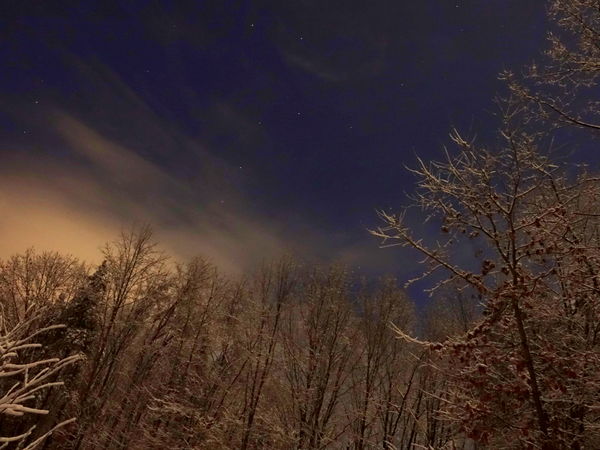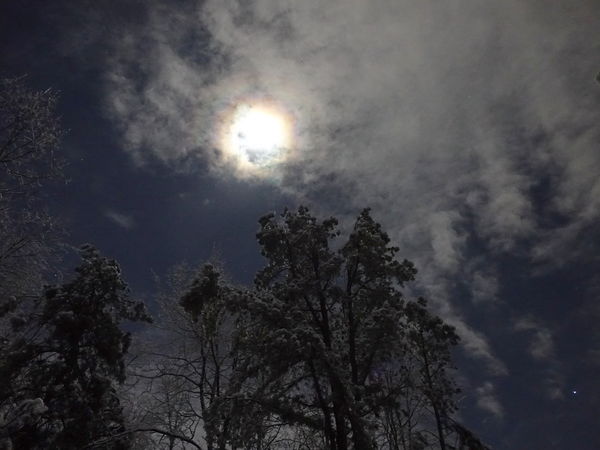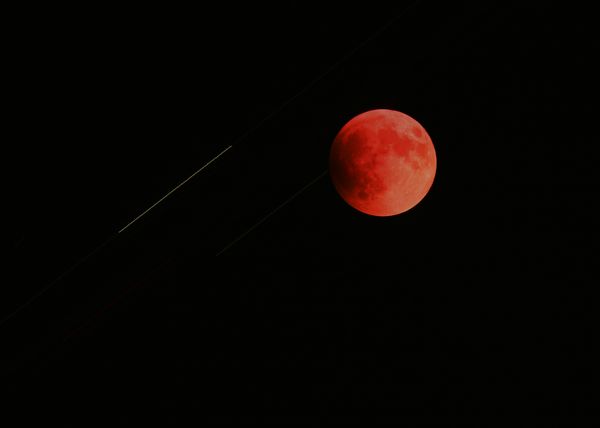super moon
Feb 8, 2020 13:44:17 #
I believe that we are going to have a super moon tomorrow night.
What setting are you going to use and are they different then normal?
What setting are you going to use and are they different then normal?
Feb 8, 2020 14:05:02 #
Cracker-barrel Philosopher
Loc: Duluth, MN
A good starting point is 1/ISO for speed at f8 as I recall.
Feb 9, 2020 09:19:55 #
Use the aperture that gives you the sharpest results - typically two stops from widest. So for my f/5.6 lens I use f/11 but you should experiment. I use the native iso for my camera and 1/250 sec. The super moon may provide slightly more light requiring an adjustment to the above - I’d adjust the shutter speed.
Thanks for reminding us about the super moon Bob.
Thanks for reminding us about the super moon Bob.
Feb 9, 2020 09:27:53 #
philo wrote:
I believe that we are going to have a super moon tomorrow night.
What setting are you going to use and are they different then normal?
What setting are you going to use and are they different then normal?
That’s the Winter moon and I believe it was last night. It was very nice with the naked eye.
It was -30 c here 😩😩😩 or I might have ventured outside.
Feb 9, 2020 09:46:22 #
I have a manofotto tripod and I couldn't get it to lock in with a 150--600 mm lens.
Feb 9, 2020 09:50:40 #
You can take any full moon images at any time of the year... I doubt anyone can see the difference.
Feb 9, 2020 10:12:03 #
Retina
Loc: Near Charleston,SC
If by different than normal you mean compared with when the moon is farther away, there should be no difference in exposure settings based on the distance from the moon. For those new to lunar shots, you can start with a shutter speed (in seconds) of 1/ISO at f16, then adjust both accordingly as ecobin suggests to use the lens' best aperture. The sun is behind us and the subject is being lit directly, so the sunny 16 rule is a good starting point. The distance between us and the moon should not affect the intensity of the moon's light. The moon does get less light from the sun than earth does during a full moon, but the difference is negligible, nowhere near even a quarter stop's worth. Also, light intensity from a subject is independent of the distance between the subject and the camera.
I have a question that is only tangentially related, so I beg the pardon of the thread police. Has anyone here ever noticed the small difference in the horizon of a super moon compared with when the moon is furthest away? I asked because we see less of the visible hemisphere when the moon is closer.
I have a question that is only tangentially related, so I beg the pardon of the thread police. Has anyone here ever noticed the small difference in the horizon of a super moon compared with when the moon is furthest away? I asked because we see less of the visible hemisphere when the moon is closer.
Feb 9, 2020 10:34:19 #
philo wrote:
I believe that we are going to have a super moon tomorrow night.
What setting are you going to use and are they different then normal?
What setting are you going to use and are they different then normal?
It's (sort of) a super moon, 4th largest of the year. Most say it's a 'few' miles off from being actually labeled 'Super'. Still good for shooting though.
https://earthsky.org/human-world/what-is-a-supermoon
Feb 9, 2020 11:31:14 #
Set exposure for the moon as you would for daylight as the moon is lit by daylight. Use the sunny 16 rule. f 16, ISO 200, 1/200 or its equivalent. Take a picture and then adjust after looking at the histogram. You may need to increase exposure by one stop.
Feb 9, 2020 11:49:46 #
billnikon
Loc: Pennsylvania/Ohio/Florida/Maui/Oregon/Vermont
philo wrote:
I believe that we are going to have a super moon tomorrow night.
What setting are you going to use and are they different then normal?
What setting are you going to use and are they different then normal?
SNOW MOON. Keep your same settings, but look at the result and change settings as necessary. Every camera is different so stick to what works for you and recalibrate after your first shot as necessary.
Feb 9, 2020 11:50:33 #
This past Friday we had an ice storm followed by snow on top of a previous snowfall. Power was out from 5pm to 11pm so the fresh snow provided a lot of illumination with the full moon. The starry picture was taken at ISO 1000, 1s exposure, F2.4 and boosted a bit with Paintshop. The moon shot was taken at ISO 3200, 0.25s, and f2.4.


Feb 9, 2020 12:32:10 #
wdross
Loc: Castle Rock, Colorado
philo wrote:
I believe that we are going to have a super moon tomorrow night.
What setting are you going to use and are they different then normal?
What setting are you going to use and are they different then normal?
A contributor to CNN suggest 600mm, ISO 800, f6.7, shutter 1000 to 2000. This would be handholdable with care. The moon will be small with a 600mm but will still have discernible features without a lot of detail. 1000mm and up will be better. Of course, that will go beyond handholdable at this time so pull out the tripod.
Feb 9, 2020 14:23:17 #
Feb 9, 2020 14:25:07 #
philo wrote:
I believe that we are going to have a
super moon tomorrow night.
What setting are you going to use and
are they different then normal?
I believe that we are going to have a
super moon tomorrow night.
What setting are you going to use and
are they different then normal?
The only change you need to make is
to employ about 7% less focal length
than for an average ordinary moon. If
you persist in using the same FL that
you've usually used the moon appears
several percent larger than typical. As
there are no other differences between
"super" and "average" moons, there's
nothing else to adjust for.
Feb 9, 2020 14:27:06 #
Just checked my favorite moon shot, blood super moon with meteor. It was ISO 100, F11 and 21 seconds on a EOS 70D 55-250mm at 250mm.
Full brightness moon will need a much faster shutter speed.
Full brightness moon will need a much faster shutter speed.
If you want to reply, then register here. Registration is free and your account is created instantly, so you can post right away.






